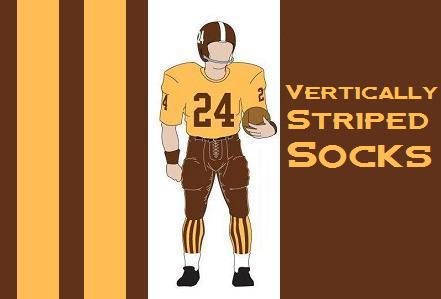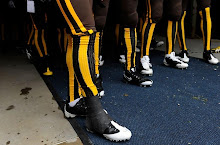These weird wheel things are being marketed as "The Post Modern Skateboard", however I have a hard time seeing skateboarders embracing anything that looks this dorky. They also look incredibly dangerous, but there is something hypnotic about watching these people prance about in these things. Can't imagine they catch on, but they are interesting...
Monday, March 23, 2015
Monday, March 16, 2015
Things I Like: The Chamberlin Observatory
Things I like: The Chamberlin Observatory
I loved this building the first time I laid eyes on it. The only thing I knew about it at first was that it was in a place called "Observatory Park" so I assumed it was the observatory. I also knew that it was an awesome looking old building, although I didn't know exactly how old. When I became a runner, I would often begin my runs at Observatory Park just so I could check out this building...something I did each time I ran past it. (This first photo is one that I took in April 2014 on one such visit)
Recently, as my family was discussing the observatory, we learned that it was named "The Chamberlin Observatory" and that there are regular open houses held there by the University of Denver, which owns the observatory. That settled it. We were going at the next available opportunity. It took a few months, as apparently the tours are very popular, but we got our name on the list, and a little over a week ago, we got an opportunity to go in and check it out.
When we arrived on the evening of March 5th, it appeared we were a little late. We were certain that the time the event was supposed to start was 7:30, but the tour was already well underway. The open house was being hosted by the very well dressed bald man in the photo above. I never caught his name or position, but I'm assuming he's a professor at DU. I will say this for the guy...he is both wonderfully interesting and quite gregarious. Basically, the perfect host. If I didn't already love the Observatory, he would have sold me on it all by himself. I think he could have sold "extra-strength hope" to 2008 Obama supporters and taken votes away from the president that year. He seemed like a really good dude, and I liked him.
One of the interesting things that my friend the well dressed bald man told us about was one of the ways that the observatory planned to fund itself. The observatory takes it's name from Humphrey Chamberlin, a Denver Real Estate magnate who pledged 50 thousand bucks to help build the facility. For that donation, his name still adorns the building to this day, but the observatory was constantly in need of supplemental income, and one of the ways they hoped to build a revenue stream was by selling the time.
Although that concept sounds ridiculous to us in 2015, apparently in the 1890's there was a burgeoning market for any place that could provide a reliable time via telegram. The observatory had equipment and scientists which allowed for very accurate time to be kept. That system was very complicated, which is a nice way for me to say that I didn't understand it entirely, but apparently they could keep time quite precisely with a combination of one of the observatories telescopes and a couple of clocks that are still on display inside the observatory. This clock you see above has been running non-stop since the 1800's, which I find to be rather awesome.
This telescope is the one that was used in conjunction with the clocks to keep accurate time. Unfortunately, after only a few months of operation, the government began to give time away for free, which eliminated this potential source of income almost as soon as it began.
The Observatory construction began in 1890, and it was opened for use in 1894. Here is a picture of it from the University of Denver archives from around the turn of the century. I find it rather hilarious that the observatory was built about a mile away from the DU campus in what was at the time a rather remote location. This makes sense, because having an observatory in the middle of the city rather lessens it's effectiveness. As you can see in the photo above, there isn't much else around at the time. It's rather funny to visit the observatory now, as it's in the middle of Denver, surrounded by homes and trees. The observatory and it's 20 inch refractory telescope, while still technically in use, is mostly kept up for it's historical significance, as the proliferation of trees nearby along with all the light from the city makes it rather unusable for legitimate scientific study. This shouldn't be all that surprising, as not too many scientific instruments from the 1890's are still in active use today.
Here is what the telescope looks like today...or rather, what it looked like back on March 5th. This is a picture that I took of it as we waited in line to take a look at Jupiter and three of it's moons in the eastern sky. (Jupiter actually has 67 moons, but only four are visible with this telescope, and one of them was currently behind Jupiter, making it possible to only see 3 of them, but even seeing only three was pretty cool.)
Here is another photo that I took of the roof of the observatory. It was a chilly night, and the telescope needs to be at the same temperature as the outside so that it doesn't fog over and it gives the best possible views. However, I took this picture because I was fascinated by the dome. It only has a little slit in it, and it must be manually rotated to open up to the portion of the sky that you want to see. Another thing that I found interesting is that the telescope is attached to a machine that keeps it tracking with things in the sky as the earth moves. Otherwise, if you kept it steady, the objects that you are looking at would rotate out of view of the telescope. This means that the telescope is constantly moving just a tiny bit at a time...much like the hour hand of a clock. The man giving the tour of the observatory told me that occasionally if you look at a single object in the sky for too long, all of a sudden everything goes blank. It can be disorienting the first time it happens, but all it really means is that the telescope has rotated so far that it is now pointing at the dome of the observatory, and in order to keep viewing whichever star or planet you have been fixed upon, you need to go and rotate the dome to open up the slit to that heavenly body.
Here is a photo of the telescope from around the turn of the century. What is amazing to me is how little everything in this room has changed in 110ish years. The walls have been painted a dark red, but apart from that, everything in this room looks nearly identical. Even the large stepladder on the left side of the picture is the same. I walked up those steps to get a view of the stars on March 5th...and they were being used in the 1800's. Perhaps that is cool to only me, but it's really cool to me. It's like walking back into history.
I hate that it's sometimes impossible to get a feeling for size in a photograph. These stones that you see above are enormous and form the pier to which the telescope is tethered. This keeps it steady no matter what is going on in the City of Denver outside. This massive pier actually goes another 12 feet down below the basement floor that you see here. This is in the bowels of the Observatory, and forms one of the coolest basements you'll ever see.
Here is another photo of the pier and the stairs leading down. This pile of stones is surrounded by a building that is almost entirely built of wood. Due to the historical and irreplaceable nature of this building, it is equipped with a fire alarm so sensitive that even bright camera lights will set it off.
This photo is a little silly, but I love the little Victorian details like this ornate door handle. A lot of craft and attention to detail went into this building, and you see it everywhere you look. They quite literally do not build them like this anymore.
Here is a view of the park at night from the observatory balcony looking south. There are some lovely homes in every direction, I don't know why, but I thought this was a fun picture to include. The neighborhood has come a long way from the time when the Observatory was the ONLY thing in town.
This is a photo that I took a few days after visiting the inside of the Observatory. I had always wondered why there was a miniature dome just to the west of the actual dome like some kind of Observatory Mini-Me. Herbert Howe, the original professor of astronomy and mathematics at the University of Denver, decided to have this second smaller observatory built for students. Howe spent a great deal of time, energy, and money getting the observatory up and running, and he did not want a bunch of 18 year old students ruining his expensive telescope, so this smaller building was for younger students who hadn't yet earned their place in the big building. There was a smaller telescope that had been placed inside that building that they could begin their studies with. These days, that smaller telescope has been attached to the larger one inside Chamberlin and is used as a finder telescope. Today, the student observatory is vacant.
I included this bit of art that is found inside Chamberlin because I don't know how many buildings have impressionist art of themselves inside their own premises. Just more charm of a building that I like so much that it was deemed worthy of a post in "Things I Like"
One final thing about Chamberlin...It's even endearingly old fashioned in it's web presence. The official website for the Observatory is decidedly Web 1.0. It looks like it was made on Geocities back in 1997 complete with the garish bright background with brightly colored text. Here is the link if you'd like to visit yourself...
http://mysite.du.edu/~rstencel/Chamberlin/
I have also included a screen capture below just in case they ever update to a more modern internet look, although I sincerely hope that never happens.
Friday, March 13, 2015
Tuesday, March 3, 2015
A balloon floats by on a freezing cold day
For some reason, I was enraptured by this balloon floating by as I ran. Also, my cheeks froze up making it hard to talk. This amused me, so I thought I'd share the 22 seconds from this morning.
Subscribe to:
Posts (Atom)






















